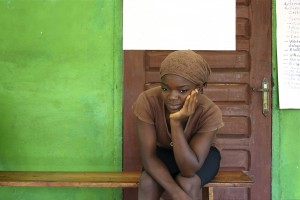Just as with public services or pay levels, inequality between men and women characterises corruption. Corruption in the provision of basic services such as health and education – which are key areas for achieving the Millennium Development Goals – can have disproportionate and negative consequences for women and girls. Corruption can compromise their access to quality schools and clinics, their own empowerment and their country’s development. A recent working paper by Transparency International looks at some of the reasons why and how corruption in service delivery unequally affects women and girls more, particularly those that are the poorest. What is more troubling is that the systemic discrimination that poor women and girls already face – such as in education, justice, health care and jobs – is only deepened when corruption becomes the currency for access.
An example of this comes from the northern highland province of Huancavelica in Peru. According to the United Nations, this is a place that has the lowest human development ranking among all the country’s provinces. It is from here that a local female high school student filed a complaint against her professor, who she accused of constantly harassing her to go out with him and threatening to fail her if she did not.
As the working paper by Transparency International highlights, Peru is not alone in the problem of abuse of power being used to exploit women and girls. According to a report by Plan, there is evidence of the same plague affecting education systems across West Africa, where slang terms such as “bush stipend” or “chalk allowance” are used as code words to signal what teachers expect sexually from female students in return for grades or other school-related duties. In the end, these practices marginalise girls and hurt their education, leaving many to abandon school and their professional dreams.
But what the case from Peru also shows us is how corruption becomes tied up into the process of trying to seek justice and exerts another level of discrimination against women. Even after the student alerted the problem to the high school principal and local police, who were relatives of the accused, the student never received any response from these entrusted authorities. An investigation found that the principal never sent the complaint on to the higher administrative level, whose office is an eight-hour trip away from the town.
Transparency International works on these issues in Peru through its national chapter, Proética. Its executive director, Cecilia Blondet, raised these concerns during her presentation (see the webcast and read the text in Spanish) at the civil society hearings organised by the United Nations on 14-15 June 2010 in New York on the MDGs. She focused on tools for how to combat high corruption and low accountability and empower women and the poorest. These ideas and their linkages to achieving the MDGs will be taken up by the anti-corruption movement at the next International Anti-Corruption Conference (IACC) to be held on 10-13 November in Thailand. What are your thoughts?
















 Connect with us on Facebook
Connect with us on Facebook Follow us on Twitter
Follow us on Twitter